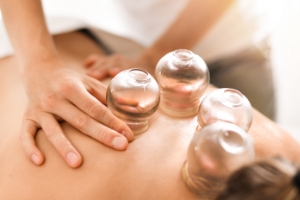No products in the cart.
Back Support (CR)
CLINICAL APPLICATIONS
- Chronic low back pain (lumbago)
- Weakness and soreness of the lower back and knees
- Dull achy back pain, stiffness, and limited range of motion
- Slow and incomplete recovery from back injuries
- Sciatica, osteoarthritis, lumbago, lower back pain resulting from osteoporosis
WESTERN THERAPEUTIC ACTIONS
- Chondroprotective function to prevent joint destruction and cartilage erosion
- Osteogenic function to promote the generation of new bones
- Anti-inflammatory effect to reduce pain, swelling, and redness
- Analgesic influence to relieve pain
- Antispasmodic effect of stopping muscle spasms and cramping
INGREDIENTS
- Bai Shao (Radix Paeoniae Alba)
- Chuan Niu Xi (Radix Cyathulae)
- Di Huang (Radix Rehmanniae)
- Du Huo (Radix Angelicae Pubescentis)
- Du Zhong (Cortex Eucommiae)
- Ji Xue Teng (Caulis Spatholobi)
- Mu Gua (Fructus Chaenomelis)
- Qian Nian Jian (Rhizoma Homalomenae)
- Sang Ji Sheng (Herba Taxilli)
- Wei Ling Xian (Radix et Rhizoma Clematidis)
- Zhi Gan Cao (Radix et Rhizoma Glycyrrhizae Praeparata cum Melle)
FORMULA EXPLANATION
Back Support (CR) is formulated based on Du Huo Ji Sheng Tang (Angelica Pubescens and Taxillus Decoction), the historical herbal formula used to treat chronic low back pain, sciatica, rheumatoid arthritis, and osteoarthritis.[2] Back Support (CR) contains herbs that activate qi and blood circulation, remove qi and blood stagnation, relieve pain, and nourish the muscles and tendons.
In this formula, a hefty dose of Du Huo (Radix Angelicae Pubescentis) is used to dispel wind, cold, and dampness in the back and lower parts of the body. Du Zhong (Cortex Eucommiae), Sang Ji Sheng (Herba Taxilli), Qian Nian Jian (Rhizoma Homalomenae), and Di Huang (Radix Rehmanniae) replenish the vital functions of the Liver and the Kidney, which are responsible for strengthening the bones, sinews, and muscles of the lower back and knees. Bai Shao (Radix Paeoniae Alba) has analgesic, antispasmodic, and anti-inflammatory effects. Together with the harmonizing effect of Zhi Gan Cao (Radix et Rhizoma Glycyrrhizae Praeparata cum Melle), they nourish and relax the tendons and muscles in the back. Mu Gua (Fructus Chaenomelis), Wei Ling Xian (Radix et Rhizoma Clematidis), and Ji Xue Teng (Caulis Spatholobi) increase qi and blood circulation to relax the muscles and tendons in the back. Chuan Niu Xi (Radix Cyathulae) invigorates the blood and acts as a channel-guiding herb to direct the effects of the formula to the lumbar region. Together, these herbs treat chronic pain affecting the lower back.
In this formula, a hefty dose of Du Huo (Radix Angelicae Pubescentis) is used to dispel wind, cold, and dampness in the back and lower parts of the body. Du Zhong (Cortex Eucommiae), Sang Ji Sheng (Herba Taxilli), Qian Nian Jian (Rhizoma Homalomenae), and Di Huang (Radix Rehmanniae) replenish the vital functions of the Liver and the Kidney, which are responsible for strengthening the bones, sinews, and muscles of the lower back and knees. Bai Shao (Radix Paeoniae Alba) has analgesic, antispasmodic, and anti-inflammatory effects. Together with the harmonizing effect of Zhi Gan Cao (Radix et Rhizoma Glycyrrhizae Praeparata cum Melle), they nourish and relax the tendons and muscles in the back. Mu Gua (Fructus Chaenomelis), Wei Ling Xian (Radix et Rhizoma Clematidis), and Ji Xue Teng (Caulis Spatholobi) increase qi and blood circulation to relax the muscles and tendons in the back. Chuan Niu Xi (Radix Cyathulae) invigorates the blood and acts as a channel-guiding herb to direct the effects of the formula to the lumbar region. Together, these herbs treat chronic pain affecting the lower back.
BACKGROUND
Musculoskeletal and connective tissue injuries lead to over 10 million clinic visits annually in the United States. Causes of these injuries may be external (sports injuries, car accidents, trauma), internal (chronic wear and tear of muscles, ligaments, and tendons; bones weakened by osteoporosis), or both. Acute injuries are characterized by severe pain, swelling, inflammation, and sometimes internal bleeding. Treatment of acute injuries should focus on relieving pain, reducing swelling and inflammation, and stopping bleeding. Chronic injuries are dull aches, stiffness and numbness, and decreased muscle mass and strength. Treatment of chronic injuries includes pain relief and restoration of physical and physiological functions.






